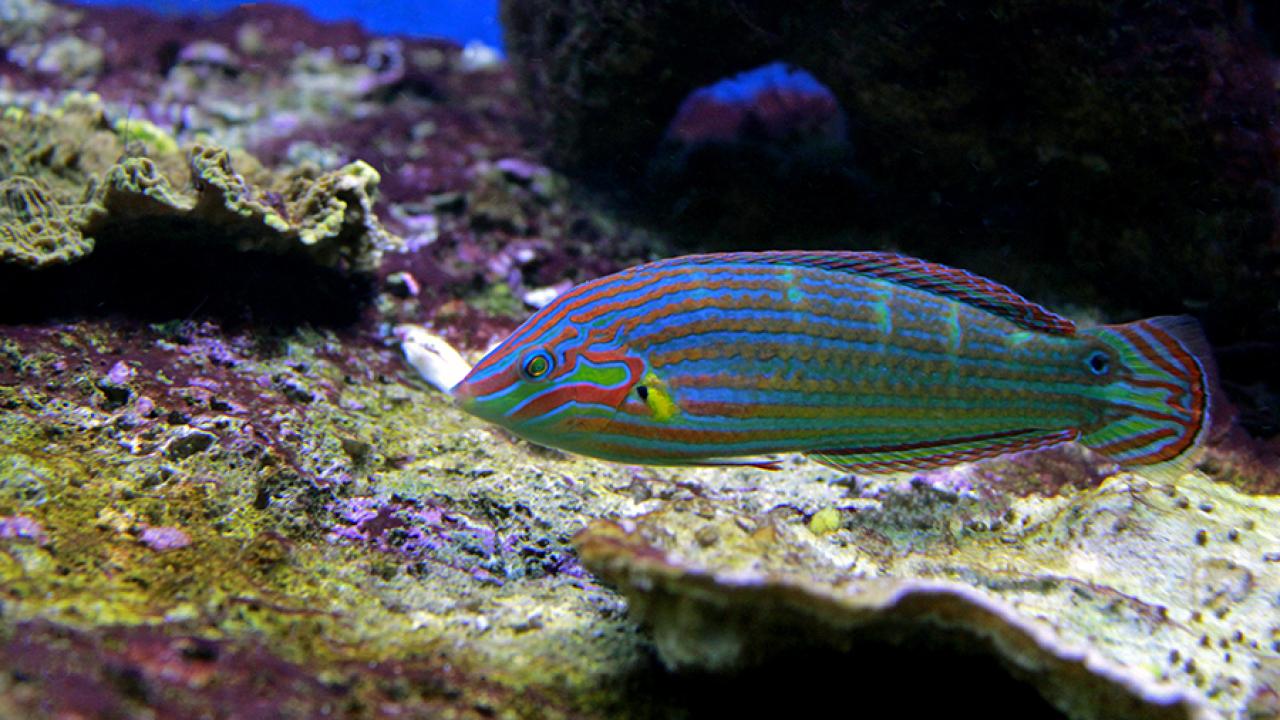Some species of fish, notably parrotfish and wrasses living on coral reefs, change their biological sex as they age, beginning life as females and later becoming functionally male. New work from the University of California, Davis, shows that this sequential hermaphroditism evolves when bigger males gain an advantage in reproductive success — for example by defending a permanent mating territory.
“People have wondered why this kind of sex change evolved,” said Jennifer Hodge, a postdoctoral researcher in the Department of Evolution and Ecology in the UC Davis College of Biological Sciences. A paper about the work by Hodge, research associate Francesco Santini and Professor Peter Wainwright is published online in The American Naturalist.
Fishes are the only vertebrates to show such a sex change over their lifetime. The prevailing theory is that sequential switching from female to male evolves when it is more beneficial to reproduce as a female when small and as a male when large — a circumstance that is likely to change depending on the social and mating behavior of the species.
Evidence to confirm this idea has been lacking, however.
Large males can hold territory
Mating behavior differs wildly across this group of fish. In some species, males defend a territory and monopolize one or more females within it. Others establish a “lek,” or temporary territory, that is visited by females. And in some species, fish mate without establishing a territory at all.
Mating systems that require defending a territory or females provide the opportunity for larger males to be more reproductively successful.
“Large males can control mates and resources, establishing a territory with food and shelter,” Hodge said.
Hodge, Santini and Wainwright tested this theory by looking at 89 species of wrasses and parrotfishes with different kinds of mating systems. They used DNA sequence data to reconstruct a tree of the relationships between the species of fish and assigned them to different mating systems based on published studies.
“Our results provide some of the first comparative evidence to support the theory that sequential hermaphroditism evolves when, for a given sex, reproduction is more effective at a certain size,” Hodge said. The size advantage increases from lek-like to haremic mating systems, she said, as does the likelihood that all males of the population will be derived from sex-changed females.
The work was supported by grants from the NSF and an NSF postdoctoral fellowship to Hodge.
Media Resources
Andy Fell, News and Media Relations, 530-752-4533, ahfell@ucdavis.edu
Jennifer Hodge, Evolution and Ecology, jennifer.renee.hodge@gmail.com
